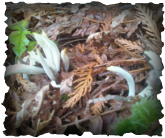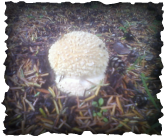Comprising literally hundreds of species, seaweeds fall into three basic categories: Red, Brown, and Green. All Types Found in Temperate Zones Are Edible! Seaweeds should be cut off well above the attachment points so they can grow back; that part is too tough to eat anyhow. In the springtime, many types of seaweed may be laden with Herring Roe; a native delicacy! Get your seaweed fresh from the sea or the rocks if it's still growing on them, don't be harvesting them from polluted areas, and get them fresh from the water or intertidal zone, not rotting on the beach, as those are likely full of Sea Lice and only good for compost. The tougher varieties can be cooked, pickled, or dried and crumbled for later cooking or powdered for seasoning. While the more tender ones (like Rockweed/Bladderwrack or Sea Lettuce) can be eaten raw or marinated in a salad, or stir-fried. All should be thoroughly washed first!
Right now (Mid-May) the season for my favorite Halophytes, that is, salt loving plants, is just getting started good. I pick the Sea Asparagus AKA Salicornia AKA Glasswort and the equally delightful Sea Rocket whenever I go down to the beach and sometimes I find some of the salt tolerant Lamb's Quarters there also. Lambs Quarters can go either way as far as salt goes, it doesn't care, although the seaside version gets rather bitter tasting towards the middle of summer. These are all fine additions to a stir-fry and soup and omelettes. The Salicornia is also good for pickling. And the Sea Rocket has the most wonderful spicy/sweet flavour so I sometimes add it to salads too, when it's in the early stages. These all make beach combing that much more wonderful. Enjoy!
|


 RSS Feed
RSS Feed